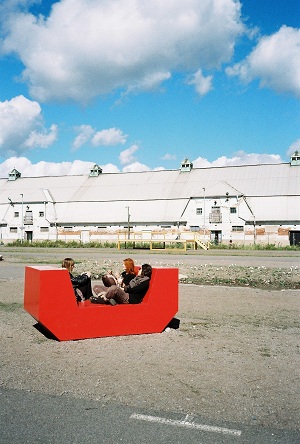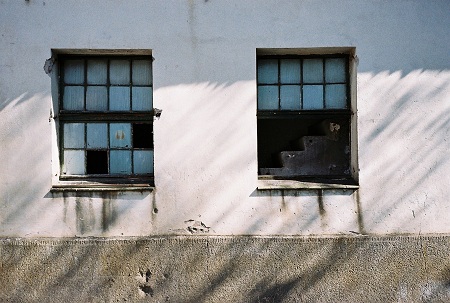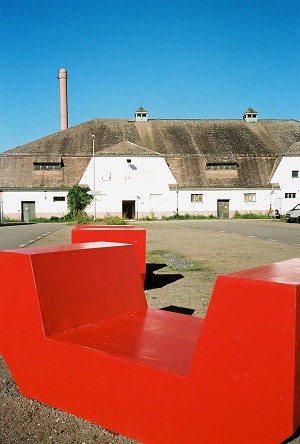OSTRALE´011
Slaughterhouse Five
Patronage: Karl-Heinz Lambertz
Minister-President of the German-speaking Community of Belgium
It is the idea and the aim of the OSTRALE to establish art as the
property and resource pool of a modern society as well to organize and
use its innovative power economically and socially on a regional and
international level.

It is the idea and the aim of the OSTRALE to establish art as the
property and resource pool of a modern society as well to organize and
use its innovative power economically and socially on a regional and
international level.In its fifth year the festival deals in the sense of the 1969 published roman by the US-bestseller-author Kurt
Vonnegut (1922-2007) "Slaughterhouse Five" with the field of apparently free of structure - between historic and contemporary communicating states. The story of the novel "Slaughterhouse Five" plays for real on the present day area of the
OSTRALE during the bombardment of Dresden in the night of the 13th to the
14th of February 1945. The story weaves fantasy and auto-biografic aspects and is telling without a traditional structure and punctuation.
But the meaningful referring to the novel means a formale bound in the same time because only the arts are able to tell non-verbal.
Every art is a form of telling because `reality´ is showing its essence by telling too. Already words are discribing states of things. The aspiration to truth and beauty of art is founded in this sense. But it would be fatal to target this specific story to the artist - but a story which deals with the different historic and contemporary cornerstones - this is the challenge the OSTRALE´011 wants to dare.
The theme symbolizes the continuing timeline of the development of the ailing buildings of the Erlwein-Slaughterhouse where the OSTRALE takes place every year - which is developing to an all-year centre for contemporary arts.

OSTRALE commenced in 2007 as a local initiative and has ever since achieved a broad reach within a short period of time. The exhibition represents the whole spectrum of contemporary art in an interdisciplinary way. Hundreds of national and international artists are invited to take part in the festival, which takes place at a meaningful architectural and historic industrial venue.
Dresden in particular has reached worldwide recognition, being known as “Florence of the Elbe”. However, with OSTRALE the city has gained the potential to set a cultural and touristic antipole to its baroque history and to develop a historical generative, contemporary perspective to the classical exhibition format. Thus, today Dresden can expand its international significance in relation to “modernity”.

The concept of curation enables us to hold an open tender- and application procedure and also to directly invite international artists. In this manner we can achieve maximal scope and an enormous quality of international contemporary art. The artwork can be newly created in situ in our exceptional spacial structures or else be installed in a novel context.

To the festival we primarily invite artists who deal with the material on site and assemble it in new ways. Furthermore, focus is laid on a provocative handling of topics that deal with current worldwide economic and ideological developments. OSTRALE.auswärts will present “art in public space”, which will be noticeable as Street-Art outside of the area of OSTRALE.

Kin.OSTRALE, on the other hand, is a format of contemporary cinema that refers to the exhibited art works in various ways. OSTRALE.xtra programmatically contains all those contemporary forms of expression which are constantly transgressing borders between the performing and visual arts and which deal with space and the outside areas in new ways.
Finally, Out of OSTRALE is a travelling exhibition of selected art works, which takes place subsequent to OSTRALE. The exhibition will be realised in various European cities in the context of European partnerships. Out of OSTRALE will be realised under the precondition that also in other cities empty space will be revived and transformed and that there will be a functional new interpretation of industrial buildings.


